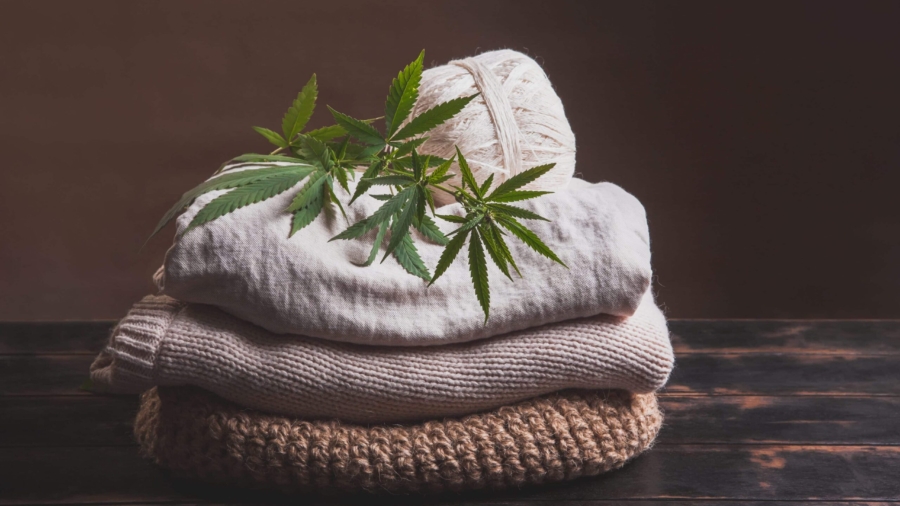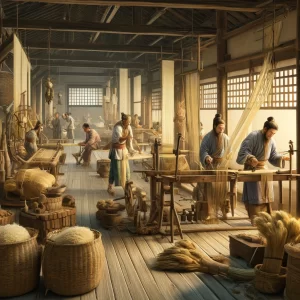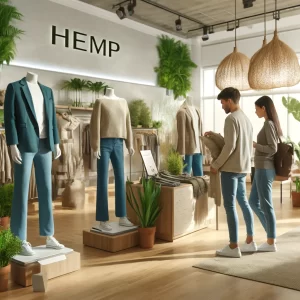The Historical Context of Hemp Fabric
Hemp fabric is one of the oldest textiles in human history. Its use dates back to 4,000 BC in Asia, where it was a staple material for clothing. The durability and versatility of hemp made it a popular choice for centuries, until Indian cotton gained prominence around the 13th century. Despite its historical significance, hemp faced a decline due to the demonization of marijuana in the 1930s, which led to its association with psychoactive cannabis.
Legalization and Industrial Hemp
The 2018 Farm Bill marked a pivotal moment for industrial hemp in the United States. This legislation removed hemp from the Controlled Substances Act, paving the way for its commercial production. The relegalization of hemp has reignited interest in its use as a textile, offering a safer investment compared to hemp-derived cannabinoids, which face complex legal challenges.
Hemp’s Sustainable and Eco-Friendly Characteristics
One of the primary reasons for the resurgence of hemp clothing is its notable sustainable and eco-friendly properties. Hemp requires significantly less water and fewer chemical fertilizers, pesticides, and herbicides compared to other crops. This reduces its environmental impact and contributes to a lower carbon footprint. Remarkably, one acre of hemp can absorb 10 to 15 tonnes of CO2 per growing season, making it an effective tool for combating climate change.
Economic Potential of Hemp Clothing
According to Allied Market Research, the global hemp clothing market was valued at $2.29 billion in 2021 and is projected to reach $23.02 billion by 2031, with a compound annual growth rate (CAGR) of 27.1%. This growth is driven by increasing consumer awareness of sustainable fashion and the benefits of hemp as a durable, breathable fabric. The hemp fiber market is also expected to grow significantly, reaching $50.38 billion by 2028 with a CAGR of 35.0%, according to The Business Research Company.
Benefits of Hemp Clothing
Durability and Longevity
Hemp fabric is renowned for its durability. It is three times stronger than cotton, which means garments made from hemp can withstand more wear and tear. This durability translates to longer-lasting clothing, reducing the frequency of replacements and contributing to a more sustainable wardrobe.
Comfort and Breathability
Hemp fibers are naturally breathable and have excellent moisture-wicking properties. This makes hemp clothing comfortable to wear in various climates, keeping the body cool in summer and warm in winter. Additionally, hemp fabric becomes softer with each wash, enhancing its comfort over time.
Eco-Friendly Farming Practices
Hemp cultivation promotes soil health and biodiversity. It helps prevent soil erosion and can be grown in rotation with other crops to improve soil fertility. Hemp also requires fewer pesticides, reducing the chemical load on the environment. Its deep root system helps to aerate the soil, making it a valuable crop for sustainable farming practices.
The Fashion Industry’s Shift Towards Hemp
Consumer Behavior and Sustainable Fashion
Between 2000 and 2014, consumers purchased 60% more clothing but kept each item for half as long. This trend has led to increased pollution and waste in the fashion industry. Hemp clothing offers a solution to this problem by providing a durable and sustainable alternative to fast fashion. As consumers become more aware of the environmental impact of their choices, the demand for sustainable fashion is growing.
Major Players in the Hemp Clothing Market
Several companies are leading the charge in the hemp clothing industry. Notable players include Shenyang Beijiang, BaFa Holding BV, Plains Industrial Hemp Processing Ltd., Industrial Hemp Manufacturing LLC, and Hemp Oil Canada Inc. These companies are investing in research and development to improve hemp processing techniques and create innovative products.
Challenges and Future Prospects
Overcoming Stigma and Misconceptions
Despite its benefits, hemp still faces some stigma due to its association with marijuana. Educating consumers about the differences between industrial hemp and psychoactive cannabis is crucial for the industry’s growth. Additionally, regulatory challenges and inconsistencies in hemp laws across different regions can pose obstacles.
Technological Advancements and Innovation
Advancements in technology are helping to overcome some of the challenges associated with hemp processing. Innovations in textile manufacturing are making it easier to produce high-quality hemp fabrics. Continued research and development are essential for improving the efficiency and cost-effectiveness of hemp production.
Conclusion
The resurgence of hemp clothing marks a significant step forward for the sustainable fashion industry. With its eco-friendly properties, durability, and comfort, hemp is poised to become a staple in modern wardrobes. As consumer awareness and demand for sustainable fashion continue to grow, the hemp clothing market is set to experience substantial growth in the coming years. By embracing hemp, the fashion industry can move towards a more sustainable and environmentally conscious future. for more information
Read More Articles







